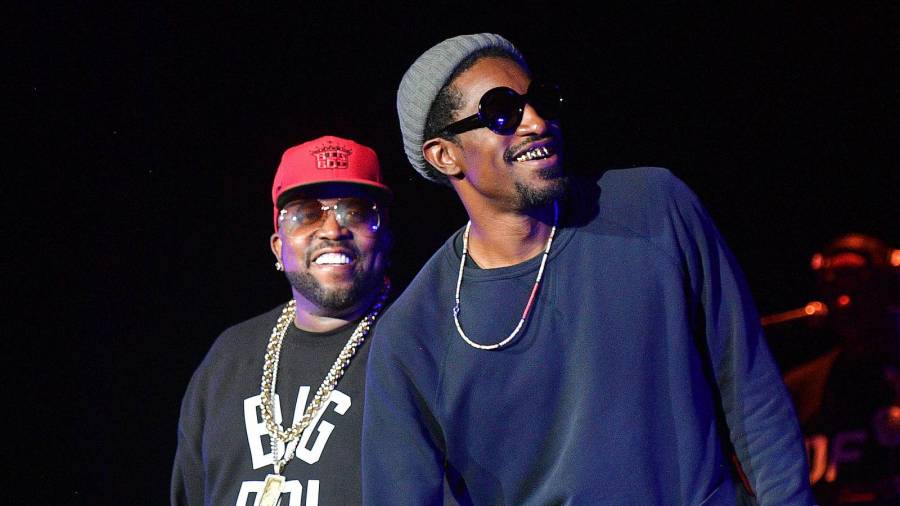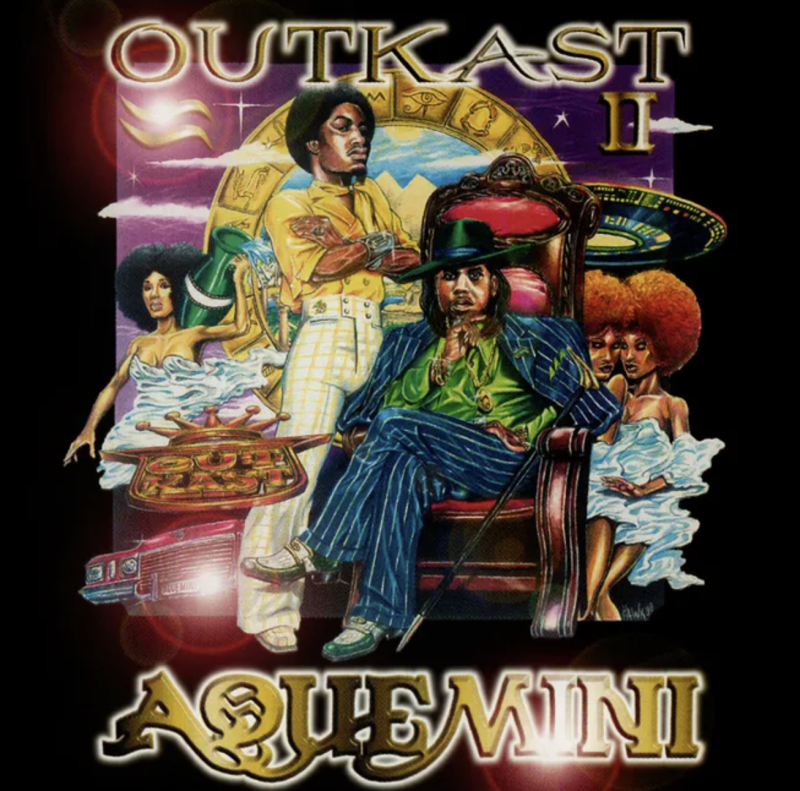Outkast 'Aquemini' Album Cover Artist Says André 3000 Played Him Music To Spark His Vision

Columbus, Ohio native Gregory Hawkins is the artistic genius behind the cover of Outkast’s third studio album Aquemini. Released in 1998, the project produced the singles “Rosa Parks,” “Skew It on the Bar-B” featuring Raekwon, “Synthesizer” with George Clinton and “Da Art of Storytellin’ (Pt. 1).” To get the right aesthetic, Hawkins had to transport himself into another era. With the help of André 3000, he was able to do just that.
“André came over and played some tunes for me, and I kind of got the feel of it,” Hawkins explained to Columbus Alive in a recent interview. “They were trying to have a ’70s vibe on it. They even had George Clinton on it … and I’m a big Parliament-Funkadelic fan. So, when I did the album cover, I tried to give it a ’70s feel with them guys in the bellbottoms and the pimp gear.”

So how did Hawkins even get to André 3000 and Big Boi? It was a simple case of knowing the right people — and having the talent. After a brief stint at Columbus College of Art & Design, Hawkins was hired as an artist through his friend Maurice Alfred, who connected Hawkins with Pablo & Associates founder William “Pablo” Davis, a Columbus music promoter, producer and manager of bands such as Midnight Star and The Deele, the latter which featured Antonio “L.A.” Reid and Kenny “Babyface” Edmonds.
“You wouldn’t believe the groups and artists that I came in contact with,” Hawkins said. “I did logos for Midnight Star. I did T-shirt designs for Babyface and L.A. Reid.”
At one point, Hawkins shared an apartment with a hometown friend named Robert Hodo, who moved to Atlanta in 1979 and married Sharon Benjamin. If that name sounds familiar, it’s because she’s André 3000’s mother, who André just honored on HipHopDX 2021 Verse Of The Year, “Life Of The Party.” Hawkins has known Dre since his was a toddler: “I had a studio set up with my drawing board and easel, and André was fascinated with my artwork.”
By 1983, Hodo convinced Hawkins to make the move to Atlanta. “Everything was happening out of Atlanta then,” he remembered. “There was no problem getting work here in Atlanta. People saw my craft and saw my work ethic, and I just fell right in. … I was doing a lot of T-shirt designs for the bootleggers. I would do a lot of the unlicensed stuff for the vendors to sell at the Atlanta Braves games, Atlanta Hawks games and Falcons games.”
When Hawkins landed the Aquemini job, he had to brush up on his Southern styles of rap and every song on Aquemini — quickly.
“I’m an African American,” he said. “I’m from the hood. I grew up in Milo. But when I came down here, it was like they were talking a different language to me. I didn’t understand a lot of the things they were saying. … I had to get familiar with Southern crunk. “That’s a big thing if you’re doing an album cover. I mean, any artist who’s going to do an album cover, the first thing you do is listen to the music.”
Aquemini was released on September 29, 1998 and peaked at No. 2 on the Billboard 200. The project was certified platinum by the Recording Industry Association of America (RIAA) just two months after its release and went 2x-platinum eight months later. Revisit the Outkast classic above.


